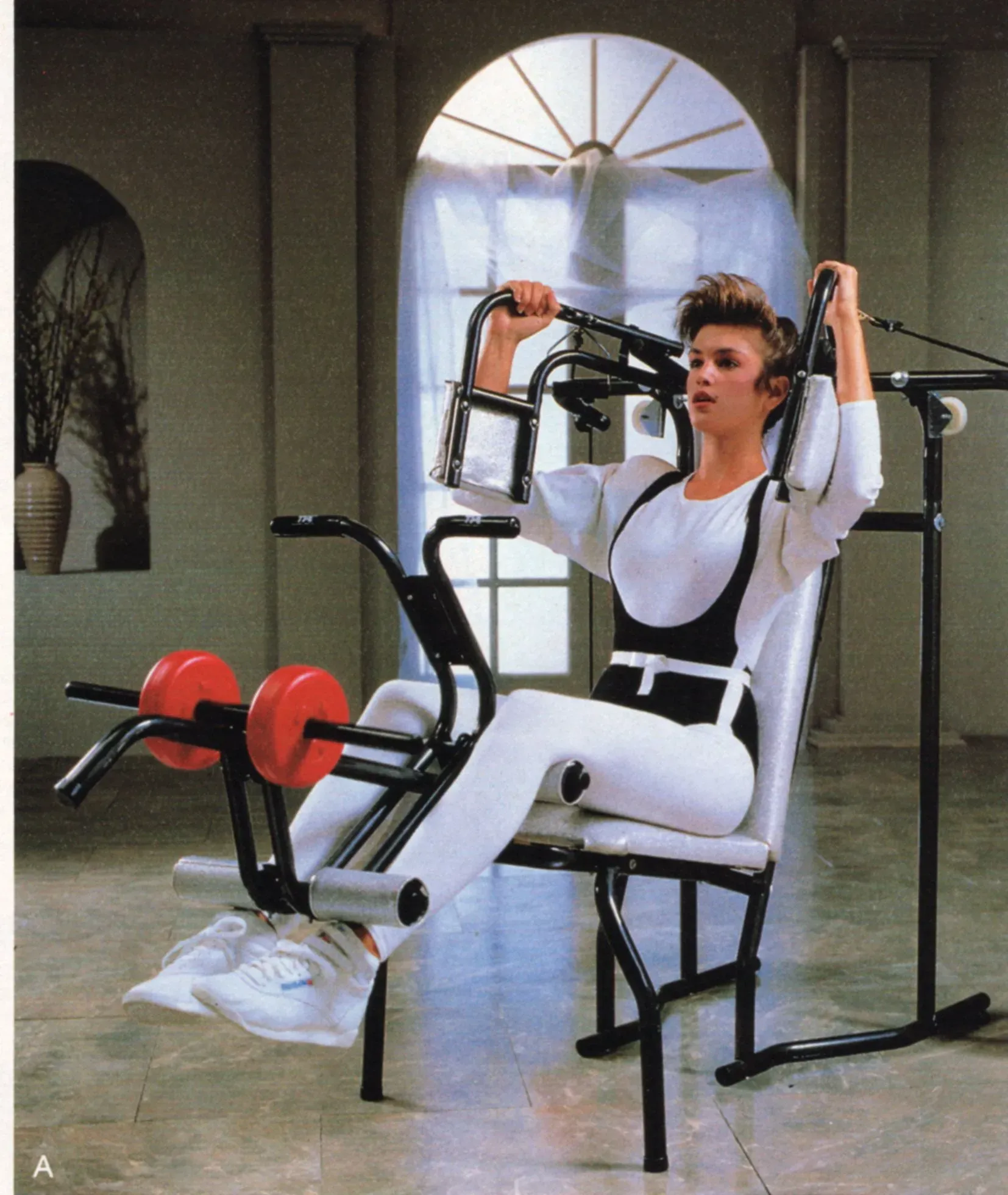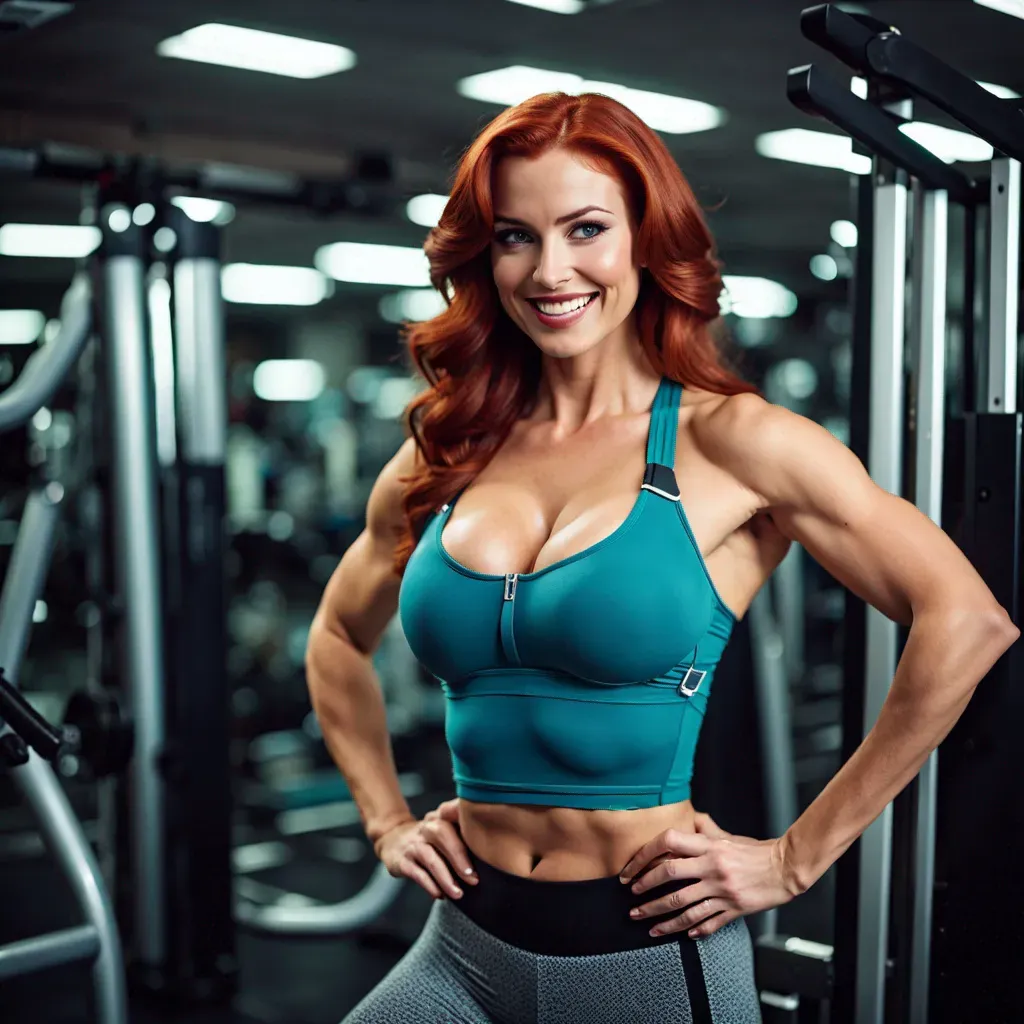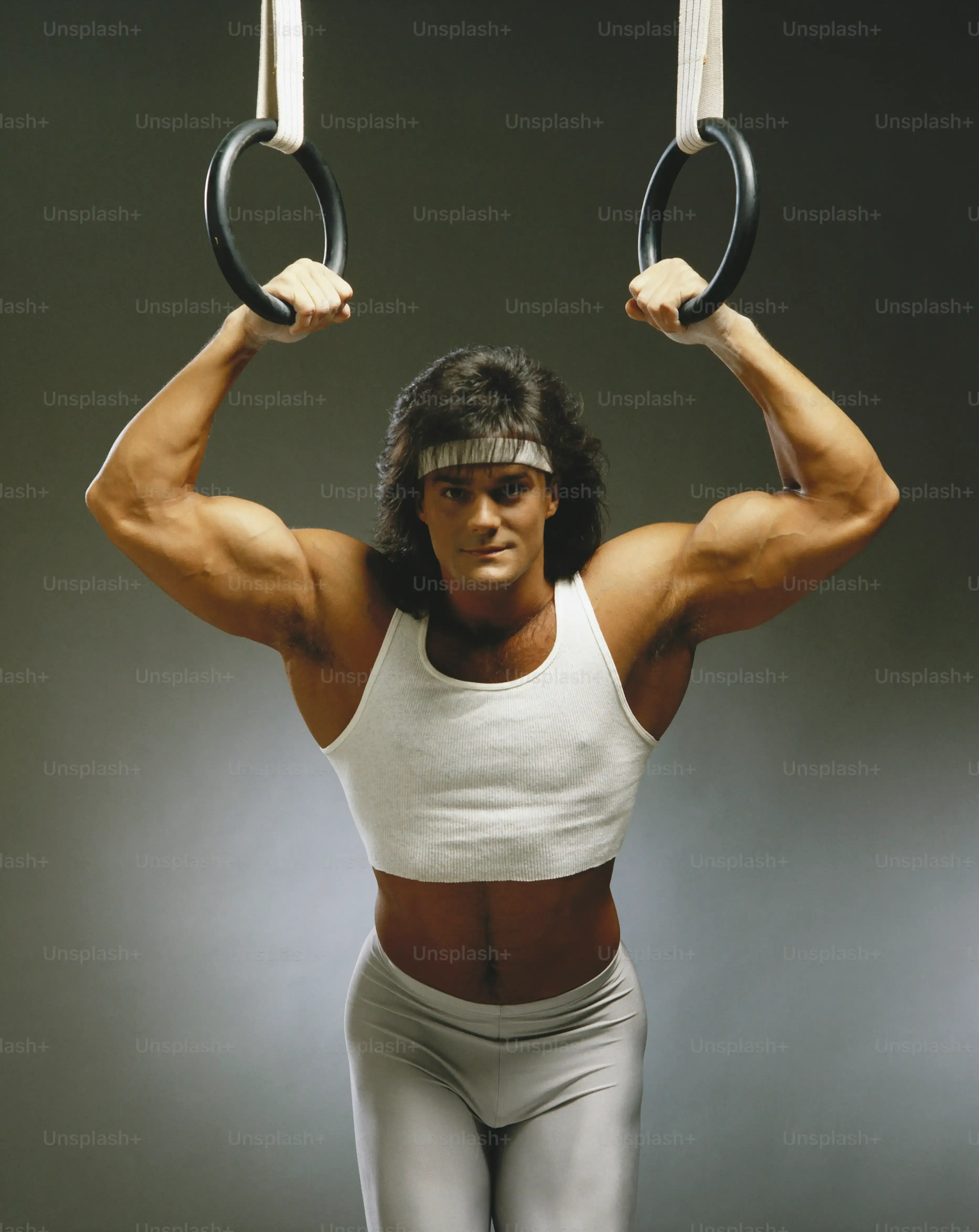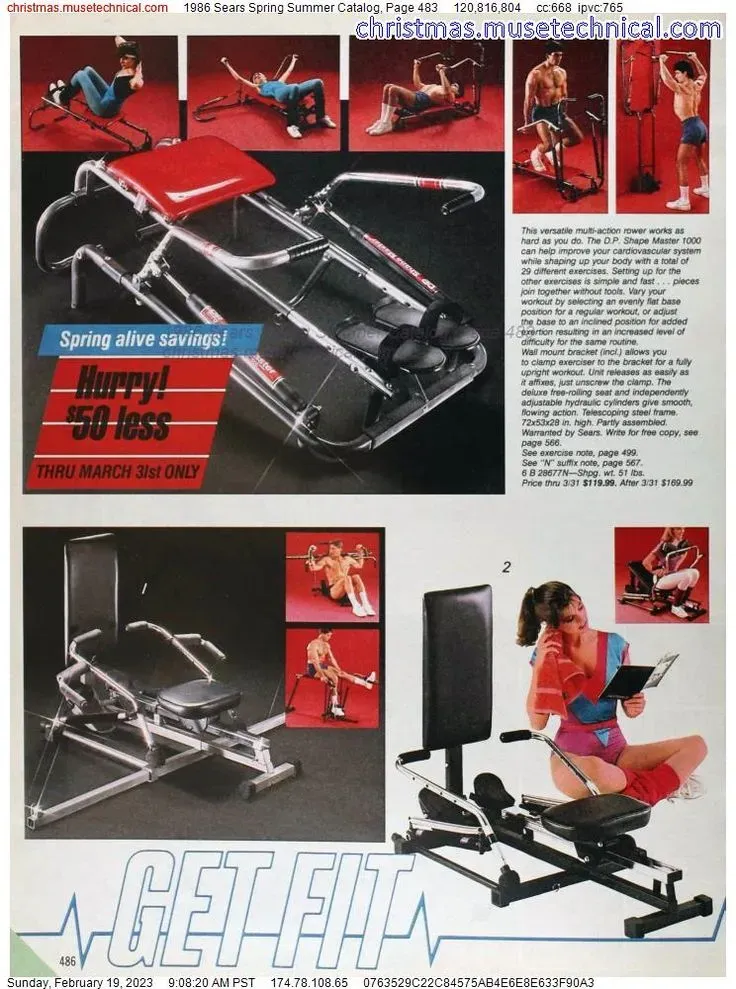Table of Contents
Remember the 80s? Big hair, neon colors, and a fitness craze that swept the nation. It wasn't just about Jane Fonda videos and leg warmers; the gyms were packed with some truly unique pieces of 80s gym equipment. These machines and free weights weren't always fancy, sometimes they looked downright clunky, but they got the job done, building the bodies that defined the decade. They had a certain charm, a no-nonsense approach that feels miles away from the sleek, digital interfaces of today's fitness centers.
Stepping Back in Time: The Era of 80s Gym Equipment
Stepping Back in Time: The Era of 80s Gym Equipment
When Fitness Got Flashy (and a Little Sweaty)
Alright, let's rewind the VCR tape to the 1980s. Forget your sleek, touch-screen treadmills and virtual reality spin classes for a second. The fitness scene back then was a different animal entirely. Aerobics exploded, fueled by leg warmers, headbands, and high-energy instructors yelling encouragement through crackly microphones. Bodybuilding was hitting mainstream, thanks to larger-than-life figures gracing magazine covers and movie screens. Suddenly, getting "fit" wasn't just for athletes; it was a lifestyle statement, complete with its own fashion sense and soundtrack. This cultural shift meant gyms weren't just dingy basements anymore; they were becoming social hubs, places to see and be seen, all while lifting, stretching, and sweating it out on the era's signature gear.
The Nuts and Bolts of 80s Iron
Inside these burgeoning fitness palaces, the 80s gym equipment held court. It wasn't always pretty. We're talking solid, often over-engineered pieces of metal and vinyl. Think Universal or Nautilus machines – bulky, imposing contraptions designed for isolating specific muscles with a satisfying clunk of weight stacks. Free weights were, of course, still king, but the machines offered a perceived safety and ease of use that appealed to the growing number of casual gym-goers. There was a straightforward honesty to it all; you pulled, you pushed, the weight moved (or it didn't), and that was that. No complex programming, no digital feedback beyond perhaps a basic timer. It was about the physical interaction with the equipment itself, the feel of the steel, the resistance of the mechanism. It felt industrial, functional, and undeniably *of its time*.
- Common 80s Gym Staples:
- Universal Weight Machines
- Nautilus Equipment
- Basic Bench Presses
- Smith Machines
- Leg Extension/Curl Machines
- Bicep Curl Benches
- Dumbbells (often hex-shaped)
- Barbells and Plates
Beyond the Leg Warmers: Iconic 80s Gym Equipment We Loved (or Hated)
Beyond the Leg Warmers: Iconic 80s Gym Equipment We Loved (or Hated)
The Chrome Kings and Vinyl Queens
so you stepped past the aerobicizers doing grapevine moves and hit the weights. What did you see? Walls of chrome and padded vinyl, mostly. The Universal gym machines were everywhere, these multi-station beasts where you could theoretically do your entire workout without moving more than ten feet. Remember the pec deck? It felt like you were trying to hug a redwood tree, but everyone used it. Then there were the leg extension and curl machines, often with a pin that felt impossible to pull with sweaty hands. Nautilus was the other big player, all cams and chains, promising "variable resistance" that sounded incredibly scientific at the time.
These machines weren't subtle. They took up space. They made noise. Using them felt like operating industrial machinery, which, frankly, had its own kind of appeal. It was a straightforward, mechanical battle against gravity and stacked metal plates. You adjusted the pin, sat down, and either lifted the weight or you didn't. No complicated screens telling you your calorie burn or optimal heart rate. Just the raw physics of leverage and resistance. It built muscle, sure, but it also built a certain kind of gym-goer who appreciated the simple, tangible feedback of iron moving.
The Curious and the Downright Questionable
Beyond the standard weight machines, the 80s were a golden age for... let's call them "innovative" pieces of 80s gym equipment. Who could forget the various types of ab exercisers that promised washboard stomachs with minimal effort? We're talking vibrating belts that were supposed to jiggle the fat away (spoiler: they didn't). There were inversion boots for hanging upside down, which felt less like fitness and more like prepping for a circus act. Gravity boots were popular, and you'd see people dangling precariously from pull-up bars, hoping to decompress their spines or something.
Then there were the weird cardio contraptions. Stair climbers that felt like you were climbing an invisible, endless staircase and left you gasping for air within minutes. Rowers that looked like medieval torture devices but offered a surprisingly decent workout if you could figure out the form. Some of this stuff was genuinely effective, if awkward, while others were clearly fads designed to capitalize on the fitness boom. It was a mix of solid engineering and snake oil, all under one sweaty roof.
Remember any particularly strange 80s gym equipment you encountered?
Why 80s Gym Equipment Still Holds Its Own (Sometimes)
Why 80s Gym Equipment Still Holds Its Own (Sometimes)
Built Like Tanks: Durability and Simplicity
Look, modern gym equipment is great and all, with its fancy screens and programmed workouts. But a lot of 80s gym equipment? That stuff was built to last. We're talking heavy-gauge steel, minimal plastic parts, and mechanisms that were straightforward – pulleys, cables, weight stacks, levers. There wasn't much to break. You didn't need a software update; you just needed grease and maybe a new cable every decade or two. This sheer durability means you still find these pieces kicking around in garages, old school gyms, and even some commercial spots that appreciate gear that doesn't require a technician every other week. Their simplicity is a feature, not a bug. You adjust the weight, you perform the movement. It cuts out the noise and gets straight to the point: lifting heavy things.
The Feel of the Old Iron (and Vinyl)
There's a certain tactile feedback you get from using classic 80s gym equipment that's different from modern machines. The way the weight stack moves, the feel of the grips, the solid thud when you rack the weight – it feels substantial. Some argue that the fixed paths of motion on certain 80s machines, while perhaps not as "functional" as free weights, could be excellent for isolating specific muscles and moving serious poundage safely. Think about those old Hammer Strength pieces (okay, maybe late 80s/early 90s, but same vibe) or the aforementioned Nautilus. They had a specific feel, a resistance curve designed in a particular way that fans still seek out. It’s less about optimizing every micro-movement and more about raw, brute force resistance.
When "Old School" Means "Outdated"
Now, let's be real. Not all 80s gym equipment is worth your time or money. Some of those contraptions were weird fads that offered questionable benefits or were just plain dangerous if used incorrectly (or even correctly). The ergonomics weren't always top-notch, sometimes leading to awkward joint positions. Safety features were often minimal compared to today's standards. And let's not even start on the hygiene of decades-old vinyl pads. While the core concept of lifting weights hasn't changed, our understanding of biomechanics, injury prevention, and effective training has evolved significantly. So, while some pieces of 80s gym equipment are timeless classics, others are best left as nostalgic relics.
- Potential Downsides of Vintage Gear:
- Outdated ergonomics
- Lack of modern safety features
- Potential for wear and tear (cables, upholstery)
- Large footprint/space required
- Limited adjustability on some pieces
Finding and Using Vintage 80s Gym Equipment Today
Finding and Using Vintage 80s Gym Equipment Today
Hunting Down That Retro Iron
So, the nostalgia bug bit, and you want a piece of that classic 80s gym equipment for your own setup? Good luck. It's not exactly gathering dust on the shelves of your local sporting goods store. Your best bet is hitting the digital flea markets and auction sites. Think eBay, Craigslist, Facebook Marketplace. People clear out garages, inherit stuff, or finally admit that vibrating belt isn't making them any thinner. You'll find everything from beat-up dumbbells and rusty benches to surprisingly well-preserved weight machines.
Estate sales can also be goldmines, especially in older neighborhoods. Sometimes, you stumble upon a complete home gym setup from the era, maybe a Universal machine or a whole rack of hex dumbbells that haven't seen the light of day since Reagan was in office. It takes patience and a willingness to sift through a lot of junk. But finding that perfect piece of 80s gym equipment feels like uncovering buried treasure.
What to Look For (and Look Out For)
Before you hand over your hard-earned cash for a piece of history, do your homework. Just because it's old doesn't mean it's good, or even safe. Check for structural integrity. Look for rust, especially on critical load-bearing points or cables. Wobbly frames are a hard pass. Inspect padding and upholstery – ripped vinyl isn't just ugly, it's unhygienic and can be expensive to replace properly. Test all moving parts. Do the pulleys run smoothly? Do the weight pins engage correctly? Is the resistance consistent?
Some wear and tear is expected with vintage 80s gym equipment, but you need to distinguish between cosmetic flaws and functional problems. A little surface rust can be cleaned, but a cracked frame is a death sentence. Don't be afraid to ask questions and, if possible, try the equipment out before buying. Remember, you're buying something potentially decades old; it won't have the precision or safety features of new gear. Factor in potential repair or restoration costs.
- Key Inspection Points for Vintage Gear:
- Frame integrity (look for cracks, bends)
- Rust level (surface vs. structural)
- Cable condition (fraying, kinks)
- Pulley function (smoothness, noise)
- Upholstery condition (tears, padding)
- Weight pins and adjustment mechanisms
- Overall stability when in use
Putting That Vintage Gear to Work
you scored a classic piece of 80s gym equipment. Now what? First, give it a thorough cleaning. Decades of sweat and dust need to go. Lubricate any moving parts according to the (likely non-existent) manual or common sense. If cables look iffy, replace them – it's cheaper than a trip to the ER. Once it's clean and functional, use it! These machines were popular for a reason; they hit muscles effectively. Just remember that form is crucial, perhaps even more so than on modern, ergonomically perfected machines.
Start light to get a feel for the movement path and resistance curve. Don't try to max out on day one, especially on equipment you're not familiar with. Integrate it into your existing routine. That old leg press might feel different than the one at your commercial gym, but it will still work your quads and hamstrings. Owning 80s gym equipment is a commitment, not just to the workout, but to maintaining a piece of fitness history. Treat it right, and it'll help you build muscle for years to come, just like it did in the era of big hair and even bigger lifts.
The Last Rep: Reflecting on 80s Gym Equipment
Stepping off the vintage weight bench or racking those classic dumbbells brings you back to a time when fitness felt a bit more raw, less about tracking every calorie and more about the grind. 80s gym equipment, for all its quirks and sometimes questionable ergonomics, played a real role in getting people moving. It wasn't always pretty, and some pieces were probably better left in the past, but the sheer simplicity and durability of certain machines and weights have given them a surprising longevity. Whether you're collecting, using them for a retro workout, or just appreciate the history, these pieces of iron and vinyl are more than just old gear; they're tangible links to a fitness era that, love it or hate it, definitely left its mark.